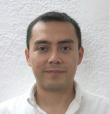
Showing 2401 - 2420 of 3629 results

Applications - Emu
Applications and Publications
Sodium-ion battery materials in Nature Communications
Updates on installation of Project BRIGHT beamlines
January 2021 saw the arrival of four shipping containers of radiation safety hutch panels for the first new Bright beamline, Micro-Computed Tomography (MCT). Installation commenced shortly thereafter with the manufacturer, Caratelli SAS, working in conjunction with Victorian-based company, Lycopodium Limited.

Applications - Koala
Applications, Recent Results and Publications on the Koala instrument.
Shining a light on brain cancer
Micro radiation therapy being developed by UOW in association with the Australian Synchrotron.
ANSTO STEAM Activities
PELICAN publication
First publication from PELICAN and National Deuteration Facility

Role at ANSTO

Public Interest Certificate (PIC) notification schedule
Under the Government Procurement (Judicial Review) Act 2019 (Cth) ANSTO will publish Public Interest Certificates (PICs) for the current financial year where appropriate.
Role at ANSTO

Role at ANSTO

Proton Elastic Scattering
Proton Elastic Scattering (PESA) is ideally suited to the measurement of hydrogen concentration in thin samples.
Dr Karin Soldenhoff to share insights into ANSTO’s expertise in rare earth processing at international conference





